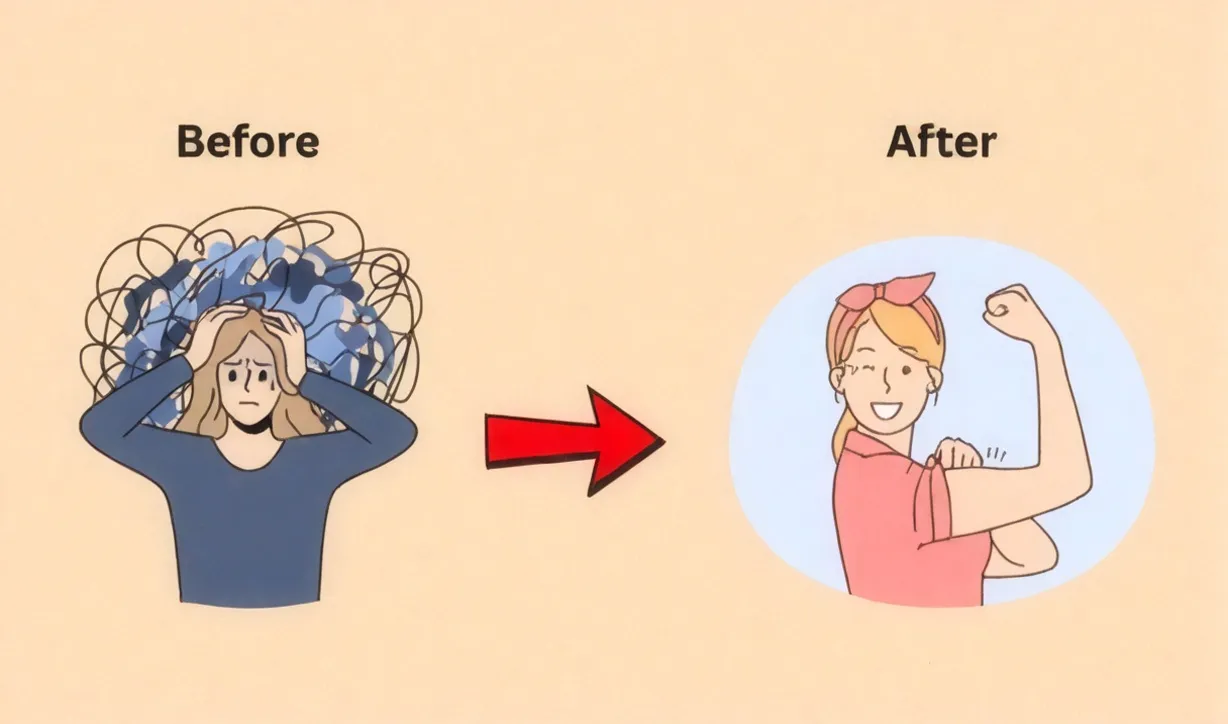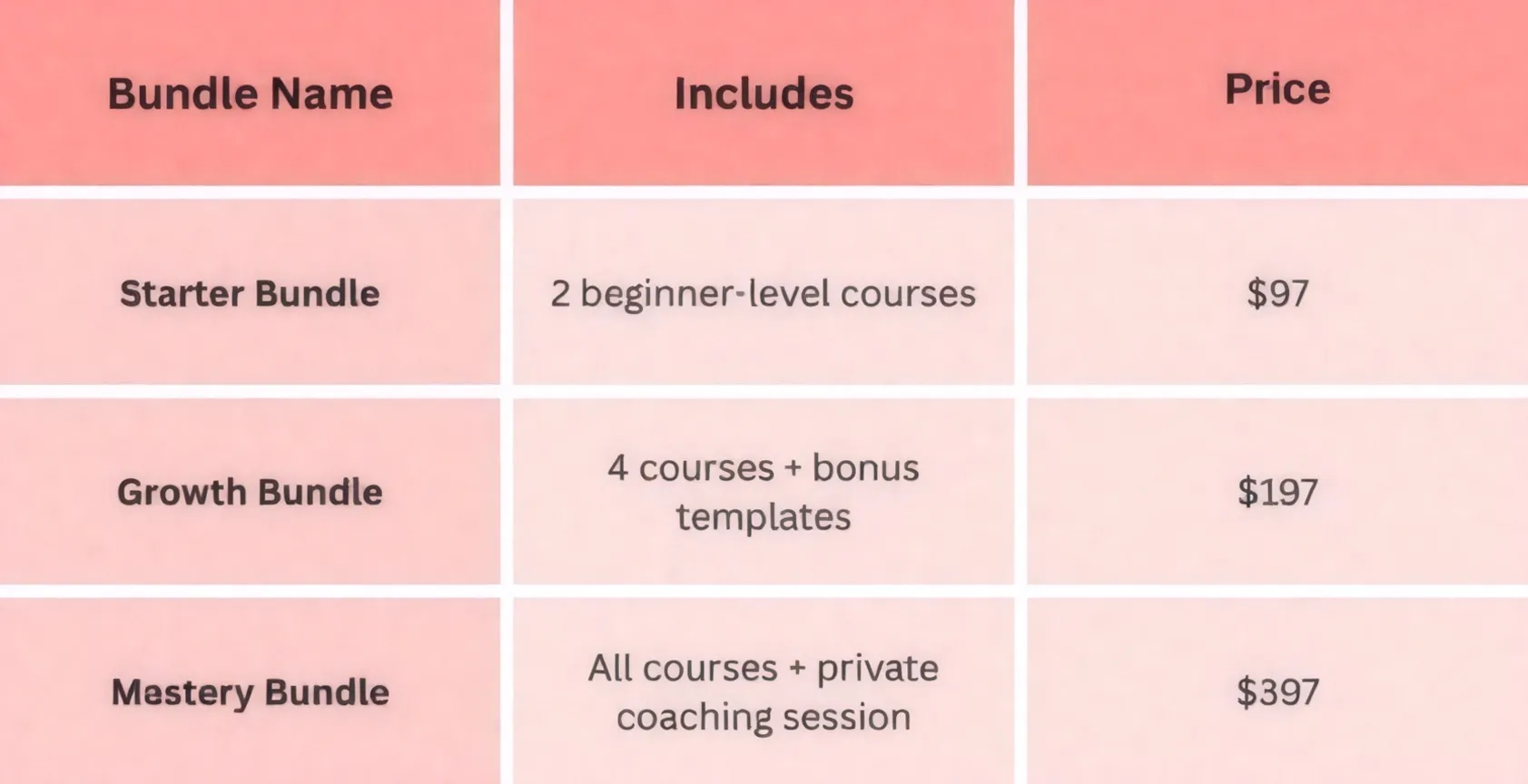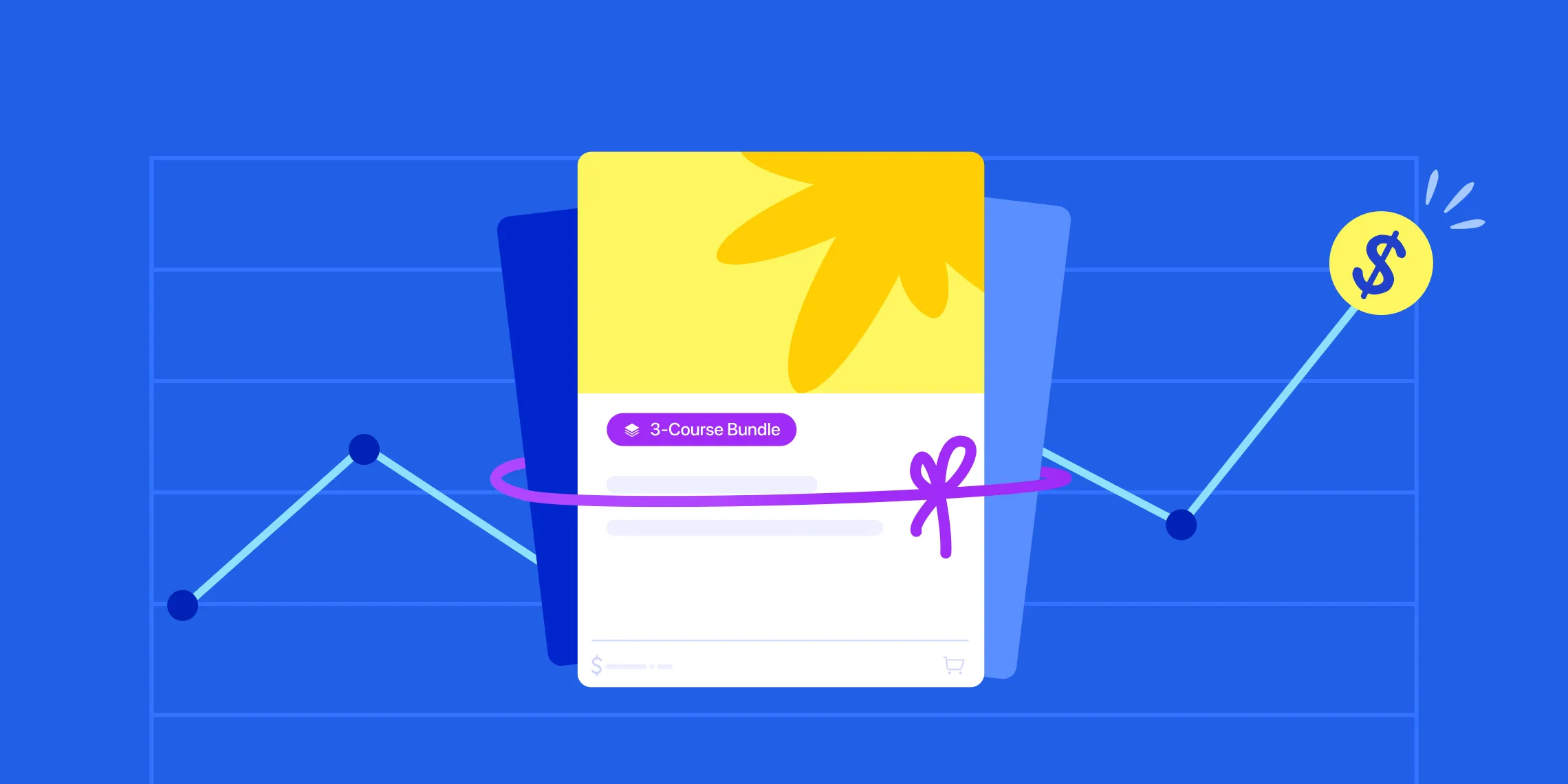If you’re an online course creator with more than one course under your belt, here’s a simple way to multiply your revenue without making anything new: bundle your courses.
Course bundles aren’t just a convenient way to package your content. When structured correctly, they increase perceived value, boost sales, and give your students a more cohesive learning experience.
In this guide, you’ll see why bundling works, how to structure and price your bundles for maximum impact, and how to position them so they become irresistible to buyers.
Why Course Bundles Boost Sales and Perceived Value
Course bundles give your audience more of what they already want—transformation.
Instead of buying one course and wondering what’s next, your students get a full solution. You offer a learning path that leads to a destination your audience is highly motivated to reach.
And this philosophy applies across the board. A Pilates course bundle is as attractive as a YouTube video editing bundle to their respective audiences. From graphics design to launching a coaching business, bundling lets you walk them through every step because a transformation is a transformation.
There is a little more at play when people weigh the value of your bundles and courses. Here’s a closer look at why bundles work:
- Higher perceived value: When people see more content packed together, it feels like they’re getting a deal, even if they don’t plan to use every single piece right away.
- Larger purchases: Bundles increase your average order value. It’s like ordering a combo meal instead of just a burger.
- Fewer options and easier choices: Research shows that people struggle with choice when they have too many options. When bundled, there’s suddenly less to consider, and it’s easier to choose.
- Stronger commitment: When learners invest in multiple courses at once, they’re more likely to stick around and finish.
What Types of Course Bundles Can You Create?
There’s no one-size-fits-all, but here are a few smart ways to group your content. Whether you’re using a simple online platform or an advanced course builder, these bundle types run the gamut, from ideas for foundational learning to advanced pairings for your audience.
Each bundle type taps into a different kind of buyer motivation. The more aligned your bundle is with a specific need or transformation, the easier it will be to sell.
- Beginner bundles: Great for new students who need to start with the basics.
- Step-by-step learning paths: Bundle your courses in a logical order from beginner to advanced.
- Goal-based bundles: Tie your courses together by a specific outcome, like “Launch Your First Podcast.”
- Topic deep-dives: Perfect for learners who want to specialize in a niche, like “Nutrition for Menopause.”
- Best-sellers bundles: Pull together your most popular courses as a ready-made greatest hits package.
- Coaching + course hybrids: Add live sessions or office hours to make your bundle more personal and high-value.
- Seasonal or limited-time bundles: Use urgency and scarcity to drive sales during a launch window.
How to Structure and Price Your Course Bundles
Let’s talk money. The way you price and position your bundle can make or break your conversion rate. You could have the most valuable set of courses in your niche, but if your pricing doesn’t feel right to your audience, they’ll bounce faster than you can say “enroll now.”
Bundle pricing is more than just sticking a number on your product. It’s about framing the offer in a way that makes the value feel undeniable, encourages audience engagement, and the purchase feels like a no-brainer.
Here’s how to get that right.
1. Lead With Value, Not Cost
People don’t buy a bundle because it costs less. They buy it because it promises more. Instead of stating what your courses cost to make or what you think they’re worth, anchor your price to the transformation they deliver.
If your bundle takes someone from “I have no idea how to start a coaching business” to “I booked 5 paying clients,” that’s a big transformation. The value of that result should guide your pricing, not the number of videos inside.

PRO TIP: Anchor the deal to make the savings feel more tangible.
List the individual prices of each course inside the bundle. Then, highlight the total value and the bundle price. Seeing the value of each course and the bundle price shows your audience what’s up for grabs.
2. Use Charm Pricing (and Yes, It Still Works)
Ever wonder why so many prices end in 7 or 9?
That’s called charm pricing. $197 sounds way cheaper than $200, even if the difference is just three dollars. It works because people tend to read from left to right and subconsciously anchor their perception on the first number.
When a customer reads “$197”, the number is seen to be just over $100 and less than $200–even if the difference is $3.
So instead of pricing your bundle at $200, try:
- $197 for premium bundles and not $200
- $97 for starter packs and not $100
- $297 for signature coaching + course bundles and not $300
Price points ending with 7 or 9 feel intentional and familiar, especially in the digital product world.
3. Create a Price Ladder
Not everyone has the same budget. But many people will spend more if you show them what’s possible. Price ladders encourage upsells when people realize the top-tier bundle is “just a bit more” but gives them way more value. Using a simple pricing tool can help you experiment with different tiers and find the sweet spot that resonates with your audience.
Here’s what that could look like:

4. Make the Savings Obvious
Your buyers shouldn’t have to do math in their heads. Spell it out.
For Example:
- Total of all courses if purchased individually: $396
- Bundle Price: $197
- You Save: $199
Seeing the savings laid out like this reinforces the feeling of getting a deal. You’re not just offering more, you’re offering more for less.
5. Build Urgency Without Pressure
Nobody likes being rushed into a purchase. But a little strategically placed urgency can move people off the fence.
Some ideas:
- “Launch Week Special—expires Sunday at midnight”
- “Only 50 spots available with the bonus group call”
- “Bundle price valid until [insert date]”
Urgency works best when it’s real. Don’t fake timers or create artificial pressure. Instead, frame your offer around a genuine timeline or bonus.
6. Offer a Payment Plan for Higher-Ticket Bundles
If your bundle is over $297, consider adding a split payment option. Even if it doesn’t change the price, it lowers the perceived risk.
For example, one payment of $397 can become 3 payments of $149
Split payments also make your bundles more affordable for people who can’t stretch their budgets for the full upfront fee.
7. Include Bonuses to Sweeten the Deal
Bonuses can close the sale, and more so when they feel exclusive. And chances are, you already have several that can be repackaged. Some practical and valuable bonuses include:
- Templates, scripts, or swipe files
- A private Q&A session or coaching call
- Entry to a live workshop
- A limited-time pop-up community
Position your bonus as time-sensitive and high-impact so it adds urgency and value without overwhelming the offer.
How to Promote and Position Your Bundles
Once you’ve built and priced your bundles, it’s time to promote them. But don’t just post it once and hope people bite. Think of promotion as an ongoing exercise in sharing value with your audience, and here are three tips to get you started:
1. Use Storytelling Marketing
Instead of listing what’s inside, talk about who it’s for and what problem it solves. Show how someone’s life or business could change after going through the bundle.
“Lisa used to waste hours trying to plan content. After going through my full ‘Content Confidence’ bundle, she’s got a 30-day calendar and a whole new mindset about showing up online.”
See how painting a picture creates a more compelling offer? Just be sure to use real stories.
2. Tap Into Your List and Socials
Use email list and your newsletter, and also plan several broadcast emails leading up to the final sale date if your bundles are time-sensitive. Include a sequence with a launch story, testimonials, and reminders.
On social media, post behind-the-scenes videos or clips of the course content. You can also share student success stories and before/after transformations. The more social proof, the better.
3. Make Your Bundles Easy to Buy
If you have a membership site using TutorLMS, you can use built-in features to group courses into bundles, track sales, and even offer bundle discounts with coupon codes. You can also use the reporting dashboard to see which bundle is selling best and optimize from there.
Start Bundling
Bundling your courses is one of the simplest ways to sell more, serve more, and scale faster. You already have the content. All you have to do is package it in a way that feels complete, valuable, and irresistible.
Once your bundle is set up, it can keep working for you in the background—bringing in sales, building loyalty, and helping your students go further, faster.
Start Using Tutor LMS Today
Ready to take your online courses to new heights? Download Tutor LMS now and enjoy a journey of eLearning excellence.
